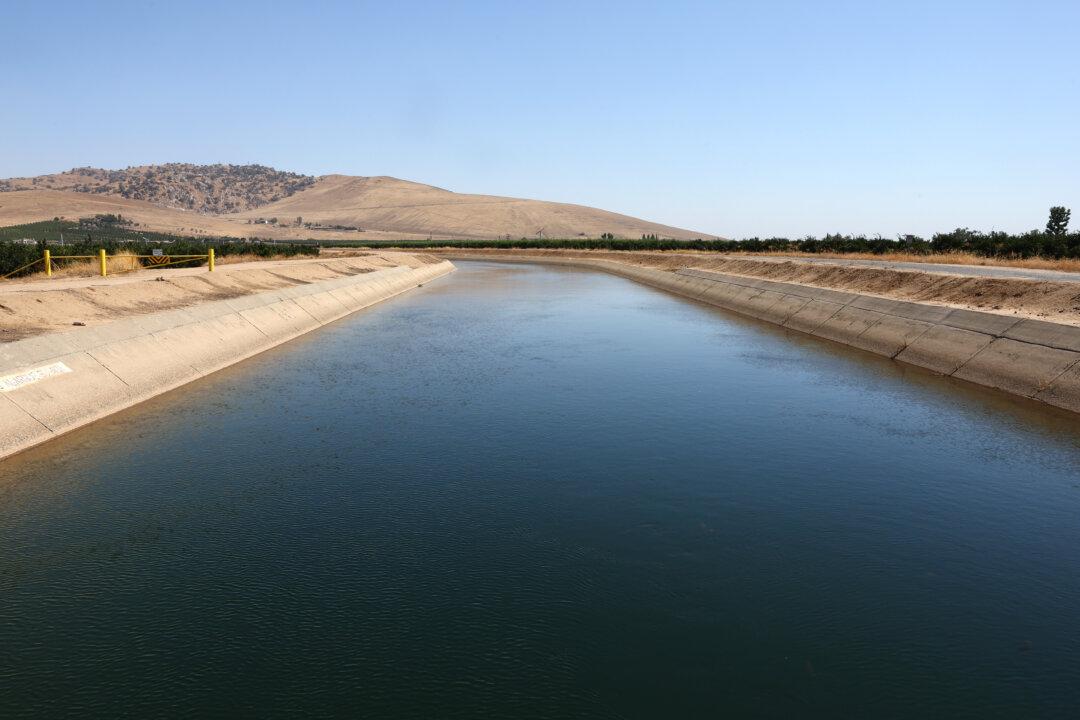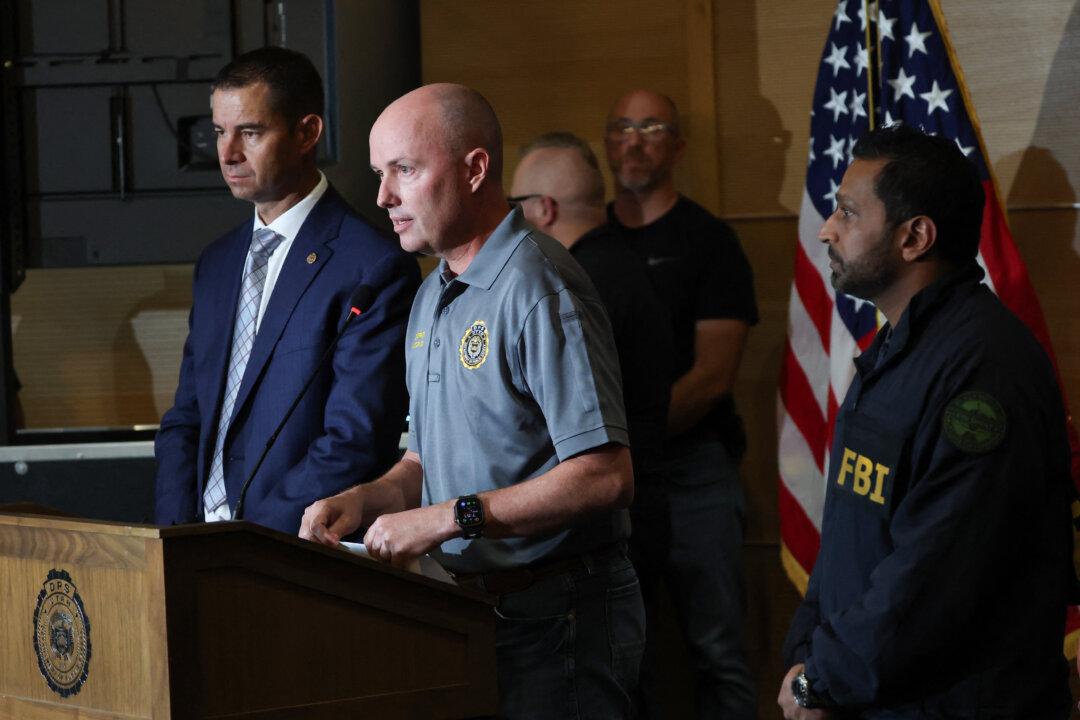SANTA NELLA, Calif.—A division of the federal government announced April 4 a $15 million solar-over-canals pilot project in California, which officials say could conserve water and potentially reduce the cost of power and water in the state.
California Gov. Gavin Newsom joined members from the Biden administration and two local Congressmen, among others, to celebrate the announcement at a press conference at a pumping station on the Delta-Mendota aqueduct in Santa Nella in the Central Valley.





